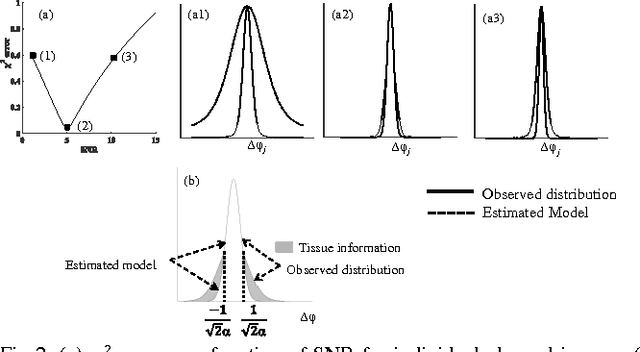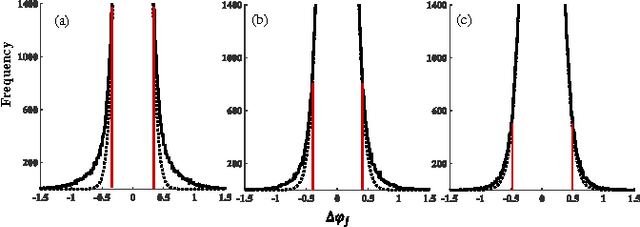Sreekanth Madhusoodhanan
A linear phase evolution model for reduction of temporal unwrapping and field estimation errors in multi-echo GRE
Jun 26, 2021



Abstract:This article aims at developing a model based optimization for reduction of temporal unwrapping and field estimation errors in multi-echo acquisition of Gradient Echo sequence. Using the assumption that the phase is linear along the temporal dimension, the field estimation is performed by application of unity rank approximation to the Hankel matrix formed using the complex exponential of the channel combined phase at each echo time. For the purpose of maintaining consistency with the observed complex data, the linear phase evolution model is formulated as an optimization problem with a cost function that involves a fidelity term and a unity rank prior, implemented using alternating minimization. Itoh s algorithm applied to the multi-echo phase estimated from this linear phase evolution model is able to reduce the unwrapping errors as compared to the unwrapping when directly applied to the measured phase. Secondly, the improved accuracy of the frequency fit in comparison to estimation using weighted least-square regression and penalized maximum likelihood is demonstrated using numerical simulation of field perturbation due to magnetic susceptibility effect. It is shown that the field can be estimated with 80 percent reduction in mean absolute error in comparison to wLSR and 66 percent reduction with respect to penalized maximum likelihood. The improvement in performance becomes more pronounced with increasing strengths of field gradient magnitudes and echo spacing.
A MAP-MRF filter for phase-sensitive coil combination in autocalibrating partially parallel susceptibility weighted MRI
Oct 29, 2016



Abstract:A statistical approach for combination of channel phases is developed for optimizing the Contrast-to-Noise Ratio (CNR) in Susceptibility Weighted Images (SWI) acquired using autocalibrating partially parallel techniques. The unwrapped phase images of each coil are filtered using local random field based probabilistic weights, derived using energy functions representative of noisy sensitivity and tissue information pertaining to venous structure in the individual channel phase images. The channel energy functions are obtained as functions of local image intensities, first or second order clique phase difference and a threshold scaling parameter dependent on the input noise level. Whereas the expectation of the individual energy functions with respect to the noise distribution in clique phase differences is to be maximized for optimal filtering, the expectation of tissue energy function decreases and noise energy function increases with increase in threshold scale parameter. The optimum scaling parameter is shown to occur at the point where expectations of both energy functions contribute to the largest possible extent. It is shown that implementation of the filter in the same lines as that of Iterated Conditional Modes (ICM) algorithm provides structural enhancement in the coil combined phase, with reduced noise amplification. Application to simulated and in vivo multi-channel SWI shows that CNR of combined phase obtained using MAP-MRF filter is higher as compared to that of coil combination using weighted average.
 Add to Chrome
Add to Chrome Add to Firefox
Add to Firefox Add to Edge
Add to Edge